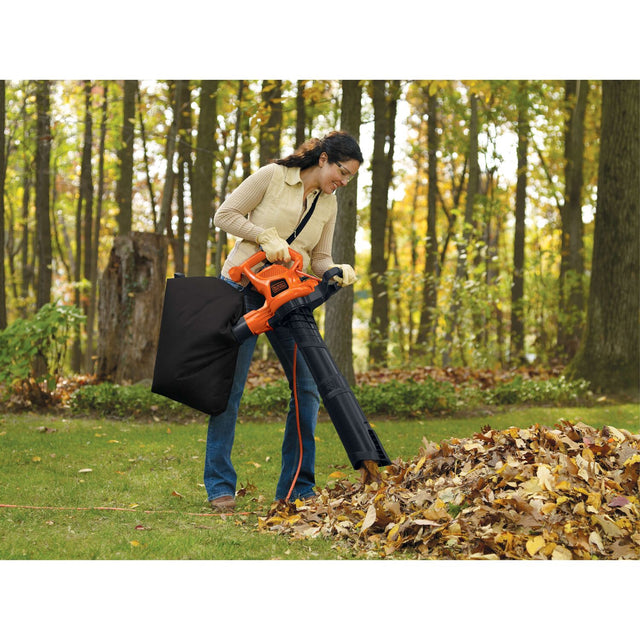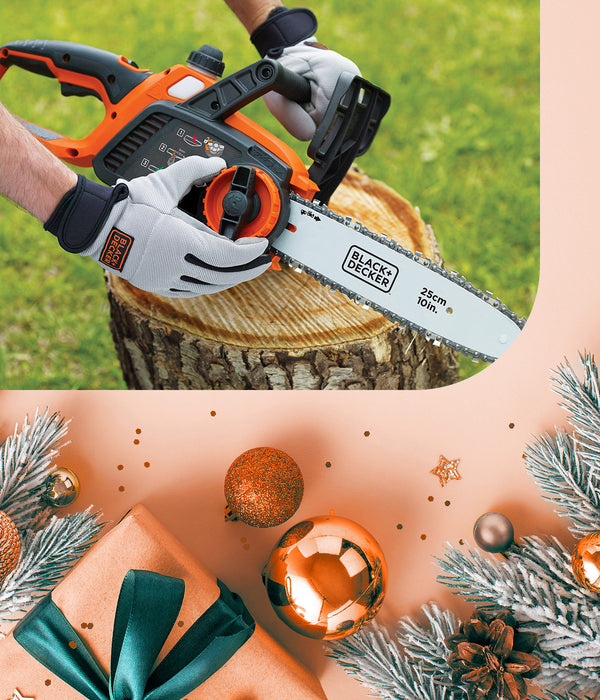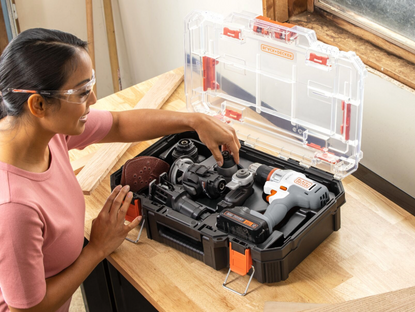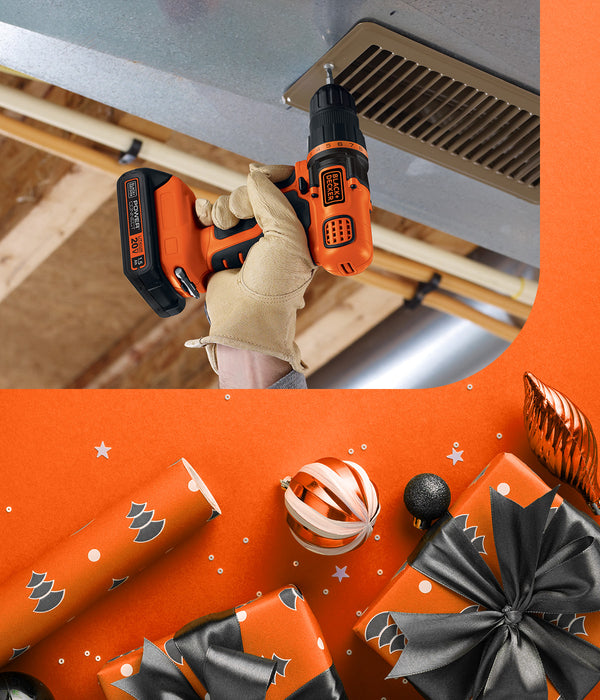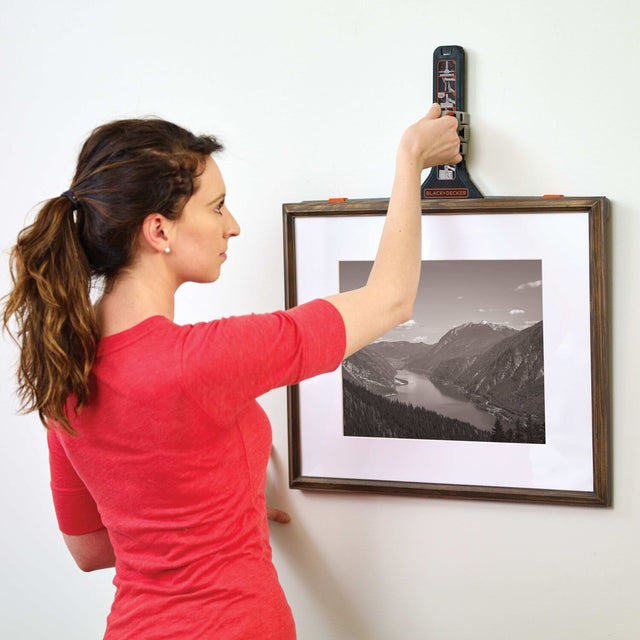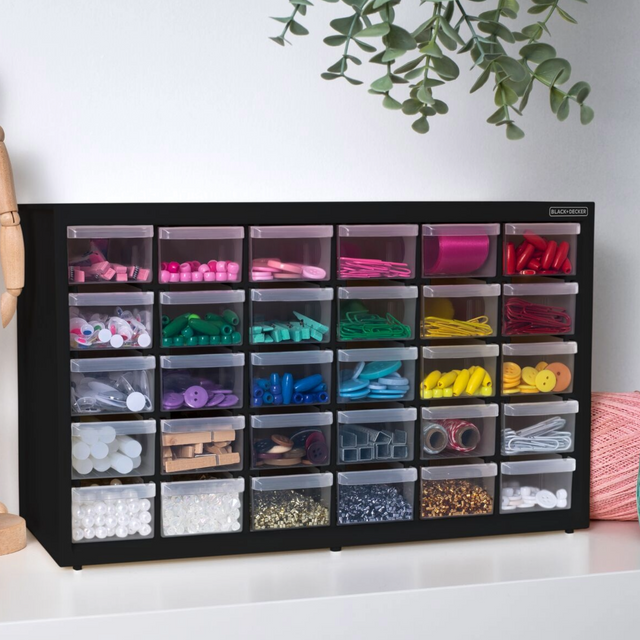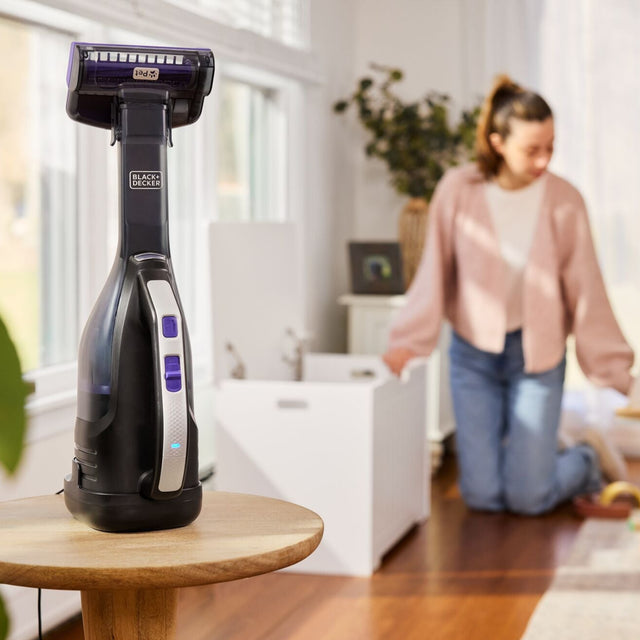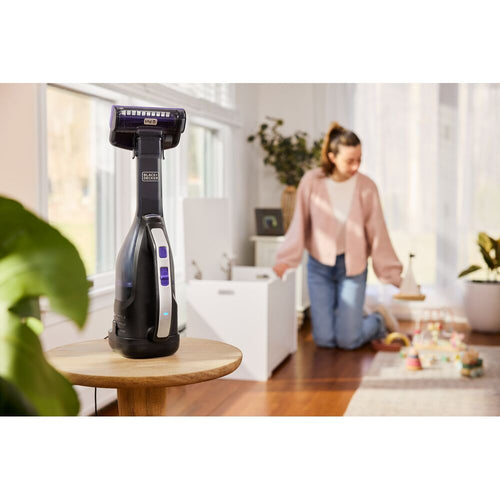- Home
- Sanders | Polishers | Buffers
Sanders | Polishers | Buffers
Achieve a flawless finish with B+D sanders and polishers. Explore our collection of sanders, buffers, and polishers for all your surface finishing needs.
FAQS:
-
- Sanders and polishers are similar in that they both involve the use of a rotating disc or pad, but they serve different purposes. Sanders are power tools used for smoothing or shaping surfaces by removing material. They are commonly used in woodworking and other applications where rough or uneven surfaces need to be made smooth. Sanders can be equipped with different types of abrasive discs or sandpaper, such as belt sanders, orbital sanders, or random orbital sanders. They are designed to remove material quickly and efficiently. On the other hand, polishers are used for enhancing the appearance of a surface by applying polishing compounds or waxes. They are commonly used in automotive detailing, metal polishing, and other applications where a high-gloss finish is desired. Polishers typically have a slower speed compared to sanders and are equipped with polishing pads or bonnets. They are designed to create a smooth and shiny surface by buffing and polishing. While there may be some overlap in functionality, sanders and polishers are generally used for different purposes and have different features and accessories to suit their specific applications.
-
- Professional detailers often use rotary polishers and dual-action polishers for their work. Rotary polishers, also known as circular polishers, are powerful tools that use a rotating disc to apply polishing compounds to the surface being worked on. They provide high-speed rotation and are capable of removing deep scratches, oxidation, and other imperfections from the paintwork. However, rotary polishers require skill and experience to use effectively, as they can generate heat and potentially damage the paint if not used properly. Dual-action polishers, also known as random orbital polishers, are another popular choice among professional detailers. These polishers combine both rotary and orbital movements, which means the pad rotates while also oscillating or vibrating in a random pattern. Dual-action polishers are generally considered safer and more user-friendly compared to rotary polishers. They are effective at removing light to moderate imperfections and are less likely to cause swirl marks or burn through the paint. The choice between rotary and dual-action polishers depends on the specific needs of the job, the level of experience of the detailer, and the condition of the vehicle's paintwork. Many professional detailers may have both types of polishers in their arsenal to handle different situations and achieve the best results.
-
- There are several different types of sanders, each designed for specific applications and with unique features. Here are some of the most common types of sanders:
- 1. Belt Sander: This sander uses a continuous loop of sandpaper wrapped around two drums. It is ideal for heavy material removal and large surface areas, such as sanding floors or removing paint from wooden surfaces.
- 2. Orbital Sander: Also known as a finishing sander, it features a square or rectangular sanding pad that moves in small orbital motions. Orbital sanders are great for fine finishing and smoothing surfaces, and they are available in both palm and random orbital variations.
- 3. Random Orbital Sander: This sander combines both orbital and rotary movements, resulting in a random pattern. It is versatile and suitable for various sanding tasks, including removing paint, smoothing surfaces, and preparing wood for finishing.
- 4. Detail Sander: As the name suggests, this sander is designed for detailed work in tight spaces. It has a small triangular sanding pad that can reach corners and edges that other sanders may struggle to access.
- 5. Disc Sander: Disc sanders have a round sanding pad that rotates rapidly. They are commonly used for shaping and smoothing wood, as well as removing paint or varnish from flat surfaces.
- 6. Drum Sander: This sander uses a rotating drum covered with sandpaper to sand large surfaces, such as floors. It is typically used for heavy-duty sanding and material removal.
- 7. Spindle Sander: Spindle sanders have a rotating spindle with different-sized sanding sleeves. They are primarily used for sanding curved or irregularly shaped surfaces, such as chair legs or curved edges.
- 8. Mouse Sander: A mouse sander, also known as a detail sander or corner sander, is a small handheld power tool used for sanding in tight or hard-to-reach areas. It gets its name from its compact size and the shape of its sanding pad, which resembles a computer mouse.
- Each type of sander has its own advantages and is suited for specific tasks. It's important to choose the right sander based on the project requirements, the type of material being worked on, and the desired finish.
-
- BLACK+DECKER sanders and polishers can be used on a variety of surfaces, including wood, metal, and foam. They are suitable for both corded and cordless models, providing flexibility for different projects.
-
- Consider the surface material and the project's requirements. For heavy-duty tasks, a corded model might be preferable, while a cordless model offers portability. Check the diameter of the sanding or polishing bits and the type of grip, such as rubber or foam, for comfort.
-
- A sander is designed for grinding and smoothing surfaces, often using different diameter bits, while a polisher is used to create a smooth, shiny finish. Sanders typically have a more abrasive action compared to polishers.
-
- Regularly clean the tool, check and replace worn bits, and ensure the battery is charged for cordless models. For pneumatic models, ensure proper air pressure and lubrication. Use a hook to store the tool properly and maintain the rubber or foam grip.
-
- Yes, there are various attachments and accessories available, including different diameter bits, hook and loop sanding pads, and replacement grips. These accessories help enhance the tool's versatility and performance.
.png?v=1725018162070&options=)
FAQS:
-
- Sanders and polishers are similar in that they both involve the use of a rotating disc or pad, but they serve different purposes. Sanders are power tools used for smoothing or shaping surfaces by removing material. They are commonly used in woodworking and other applications where rough or uneven surfaces need to be made smooth. Sanders can be equipped with different types of abrasive discs or sandpaper, such as belt sanders, orbital sanders, or random orbital sanders. They are designed to remove material quickly and efficiently. On the other hand, polishers are used for enhancing the appearance of a surface by applying polishing compounds or waxes. They are commonly used in automotive detailing, metal polishing, and other applications where a high-gloss finish is desired. Polishers typically have a slower speed compared to sanders and are equipped with polishing pads or bonnets. They are designed to create a smooth and shiny surface by buffing and polishing. While there may be some overlap in functionality, sanders and polishers are generally used for different purposes and have different features and accessories to suit their specific applications.
-
- Professional detailers often use rotary polishers and dual-action polishers for their work. Rotary polishers, also known as circular polishers, are powerful tools that use a rotating disc to apply polishing compounds to the surface being worked on. They provide high-speed rotation and are capable of removing deep scratches, oxidation, and other imperfections from the paintwork. However, rotary polishers require skill and experience to use effectively, as they can generate heat and potentially damage the paint if not used properly. Dual-action polishers, also known as random orbital polishers, are another popular choice among professional detailers. These polishers combine both rotary and orbital movements, which means the pad rotates while also oscillating or vibrating in a random pattern. Dual-action polishers are generally considered safer and more user-friendly compared to rotary polishers. They are effective at removing light to moderate imperfections and are less likely to cause swirl marks or burn through the paint. The choice between rotary and dual-action polishers depends on the specific needs of the job, the level of experience of the detailer, and the condition of the vehicle's paintwork. Many professional detailers may have both types of polishers in their arsenal to handle different situations and achieve the best results.
-
- There are several different types of sanders, each designed for specific applications and with unique features. Here are some of the most common types of sanders:
- 1. Belt Sander: This sander uses a continuous loop of sandpaper wrapped around two drums. It is ideal for heavy material removal and large surface areas, such as sanding floors or removing paint from wooden surfaces.
- 2. Orbital Sander: Also known as a finishing sander, it features a square or rectangular sanding pad that moves in small orbital motions. Orbital sanders are great for fine finishing and smoothing surfaces, and they are available in both palm and random orbital variations.
- 3. Random Orbital Sander: This sander combines both orbital and rotary movements, resulting in a random pattern. It is versatile and suitable for various sanding tasks, including removing paint, smoothing surfaces, and preparing wood for finishing.
- 4. Detail Sander: As the name suggests, this sander is designed for detailed work in tight spaces. It has a small triangular sanding pad that can reach corners and edges that other sanders may struggle to access.
- 5. Disc Sander: Disc sanders have a round sanding pad that rotates rapidly. They are commonly used for shaping and smoothing wood, as well as removing paint or varnish from flat surfaces.
- 6. Drum Sander: This sander uses a rotating drum covered with sandpaper to sand large surfaces, such as floors. It is typically used for heavy-duty sanding and material removal.
- 7. Spindle Sander: Spindle sanders have a rotating spindle with different-sized sanding sleeves. They are primarily used for sanding curved or irregularly shaped surfaces, such as chair legs or curved edges.
- 8. Mouse Sander: A mouse sander, also known as a detail sander or corner sander, is a small handheld power tool used for sanding in tight or hard-to-reach areas. It gets its name from its compact size and the shape of its sanding pad, which resembles a computer mouse.
- Each type of sander has its own advantages and is suited for specific tasks. It's important to choose the right sander based on the project requirements, the type of material being worked on, and the desired finish.
-
- BLACK+DECKER sanders and polishers can be used on a variety of surfaces, including wood, metal, and foam. They are suitable for both corded and cordless models, providing flexibility for different projects.
-
- Consider the surface material and the project's requirements. For heavy-duty tasks, a corded model might be preferable, while a cordless model offers portability. Check the diameter of the sanding or polishing bits and the type of grip, such as rubber or foam, for comfort.
-
- A sander is designed for grinding and smoothing surfaces, often using different diameter bits, while a polisher is used to create a smooth, shiny finish. Sanders typically have a more abrasive action compared to polishers.
-
- Regularly clean the tool, check and replace worn bits, and ensure the battery is charged for cordless models. For pneumatic models, ensure proper air pressure and lubrication. Use a hook to store the tool properly and maintain the rubber or foam grip.
-
- Yes, there are various attachments and accessories available, including different diameter bits, hook and loop sanding pads, and replacement grips. These accessories help enhance the tool's versatility and performance.
Recently Viewed
Related Searches
You can compare up to 4 items at a time. Remove 1 or more items before adding another item to compare.
